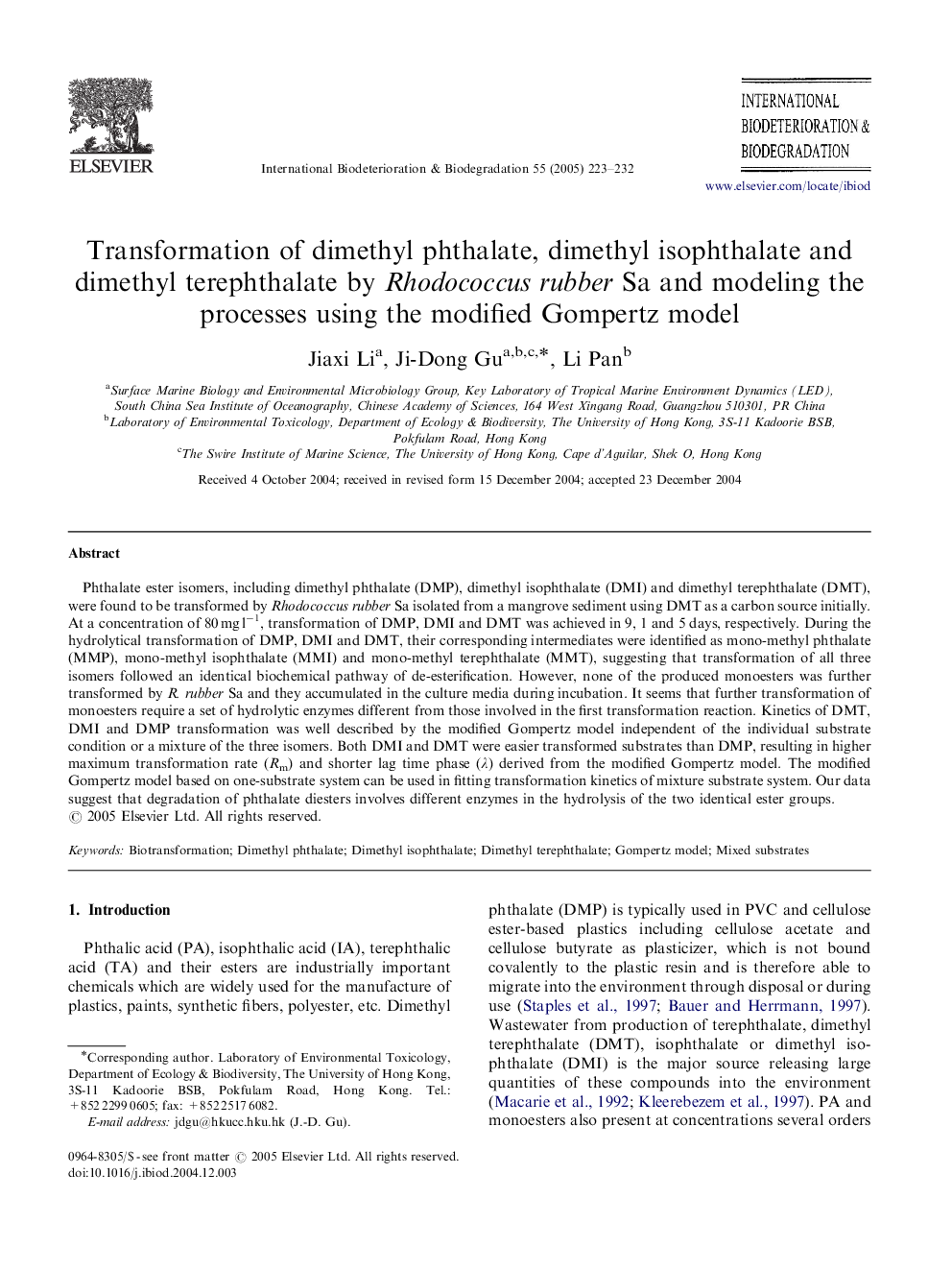| Article ID | Journal | Published Year | Pages | File Type |
|---|---|---|---|---|
| 9442281 | International Biodeterioration & Biodegradation | 2005 | 10 Pages |
Abstract
Phthalate ester isomers, including dimethyl phthalate (DMP), dimethyl isophthalate (DMI) and dimethyl terephthalate (DMT), were found to be transformed by Rhodococcus rubber Sa isolated from a mangrove sediment using DMT as a carbon source initially. At a concentration of 80 mg lâ1, transformation of DMP, DMI and DMT was achieved in 9, 1 and 5 days, respectively. During the hydrolytical transformation of DMP, DMI and DMT, their corresponding intermediates were identified as mono-methyl phthalate (MMP), mono-methyl isophthalate (MMI) and mono-methyl terephthalate (MMT), suggesting that transformation of all three isomers followed an identical biochemical pathway of de-esterification. However, none of the produced monoesters was further transformed by R. rubber Sa and they accumulated in the culture media during incubation. It seems that further transformation of monoesters require a set of hydrolytic enzymes different from those involved in the first transformation reaction. Kinetics of DMT, DMI and DMP transformation was well described by the modified Gompertz model independent of the individual substrate condition or a mixture of the three isomers. Both DMI and DMT were easier transformed substrates than DMP, resulting in higher maximum transformation rate (Rm) and shorter lag time phase (λ) derived from the modified Gompertz model. The modified Gompertz model based on one-substrate system can be used in fitting transformation kinetics of mixture substrate system. Our data suggest that degradation of phthalate diesters involves different enzymes in the hydrolysis of the two identical ester groups.
Keywords
Related Topics
Life Sciences
Environmental Science
Environmental Science (General)
Authors
Jiaxi Li, Ji-Dong Gu, Li Pan,
